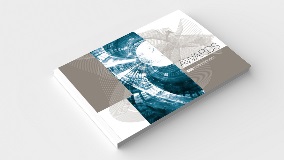Semi-transparent organic PV achieves dual function
Jun 1, 2022|Season 4, Episode 9
In this podcast episode, MRS Bulletin’s Laura Leay interviews Yang Yang and Yepin Zhao of the University of California, Los Angeles about a dual-function p-type soft interlayer they developed to enhance efficiency of charge transfer in organic solar cells. With the introduction of poly(3,4-ethylenedioxythiophene) polystyrene sulfonate (PEDOT:PSS) as the p-type material, the researchers are able to improve the efficiency of the device as well as change its optical distribution. One goal for such a device, they say, is to create a greenhouse that generates its own electricity. This study is published in ACS Nano (doi:10.1021/acsnano.1c09018).
LAURA LEAY: Welcome to MRS Bulletin’s Materials News Podcast, providing breakthrough news & interviews with researchers on the hot topics in materials research. My name is Laura Leay. If you’ve ever grown vegetables you’ll see greenhouses as a fairly passive way to improve yields. Industrial scale greenhouses used in agriculture aren’t so passive; they require electricity to keep them ventilated and control temperature. The ideal is a greenhouse that generates its own electricity and it’s a dream pursued by Prof. Yang Yang at UCLA.
YANG YANG: You cover the vegetable to preserve the water, also to protect the vegetable or plants from severe weather. Our idea is that, if we have to cover them with a greenhouse, why not turn the light that the plant doesn’t need into electricity. And plants use only very narrow wavelengths: one in the red part and one in the UV part. So these two parts. And the rest are not used for most plants.
LAURA LEAY: Prof. Yang has pioneered the development of organic photovoltaic devices, seeing their efficiency rise from 1% to 20%, which makes them competitive with silicon-based photovoltaic devices. His group has now developed a semi-transparent cell that could be used on the roofs of greenhouses. The challenge with semi-transparent photovoltaics is to find a balance between power conversion efficiency and light transmittance. Semi-transparent devices are much thinner than their opaque counterparts. The thickness of a silver electrode in a semi-transparent cell is just 15 nm, compared to 100 nm in opaque devices. With such thin layers, the contact between them is a key factor that determines the efficiency of charge transfer. Surface roughness can affect how good this contact is. Prof. Yang’s group developed a soft, conducting organic interlayer that can even out the surface roughness of the layer that the electrode sits on, allowing more efficient charge transfer. They also tuned the thickness and density to optimize the properties of this layer.
YEPIN ZHAO: We introduced a p-type interlayer to make the interface more smooth and also make the charge extraction much better so that we can improve the efficiency of the solar cell. And besides that, because we introduced another layer, so we changed the optical distribution of the whole solar cell so that we make more blue light to go through the device and then it can be absorbed by the vegetables.
LAURA LEAY: That was Dr. Yepin Zhao, a member of Prof. Yang’s group, who led on this research. Their new photovoltaic cell is transparent to light in the 360 to 780 nm range, and some of this can be used by plants during photosynthesis. Work is ongoing to improve the stability of organic photovoltaics, which offer advantages over silicon-based ones. The absorption wavelength can be tuneable, they can be lighter, they can be easier to produce and recycle since they’re made from solution and, they are flexible which means they could be used in applications beyond rooftops.
YANG YANG: Because our materials is solution processed, in principle I could use the inkjet printer to paint a Mona Lisa, or whatever, to hang on the wall outside buildings. If you come to Los Angeles there are posters outside the building for a concert, there are decorations around the city. If we can print those decorations into solar panels as well, we really can fulfill regenerative electricity in many different areas that were unthinkable before.
LAURA LEAY: This work was published in a recent issue of ACS Nano. My name is Laura Leay from the Materials Research Society. For more news, log onto the MRS Bulletin website at mrsbulletin.org and follow us on twitter, @MRSBulletin. Don’t miss the next episode of MRS Bulletin Materials News – subscribe now. Thank you for listening.

